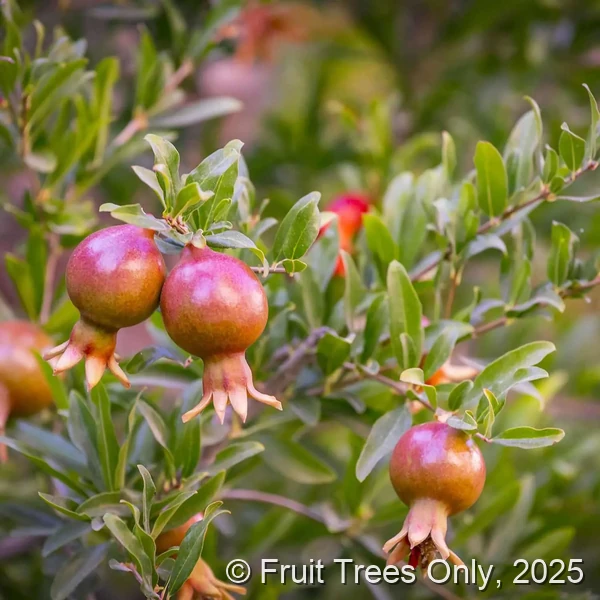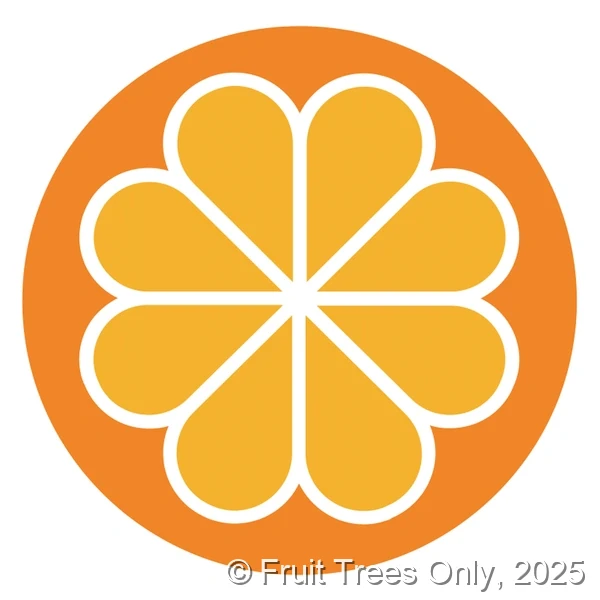Pomegranate Trees
Pomegranate trees are prized for their striking red fruit filled with juicy, antioxidant-rich arils. Hardy and drought-tolerant, they thrive in Florida’s climate and bring both beauty and productivity to the garden. With showy blossoms in spring and nutrient-packed harvests in fall, pomegranates are a flavorful and healthful addition to any landscape.


Azadi Pomegranate
'Azadi' is a soft-seeded, pale-pink variety with sweet-tart juice and low acidity. Early ripening and quite cold-tolerant for Florida.
- Lowest survival temperature: ~12–15°F
- Pollination: Self-fertile; nearby varieties can improve fruit set
- Ripening (FL): August–September (North FL), earlier in warm years
- Uses: Fresh arils, juicing, salads, light desserts

Dwarf Pomegranate
Compact ornamental selection with showy orange flowers and small fruit. Great for containers and decorative borders; fruit is edible but small and tart.
- Lowest survival temperature: ~10–15°F
- Pollination: Self-fertile
- Ripening (FL): September–October (light crops)
- Uses: Ornamental, containers, bonsai; edible arils for garnish

Parfinyanka Pomegranate
'Parfinyanka' (Parfianka) is a prized soft-seeded type with excellent sweetness and acidity balance and strong cold tolerance.
- Lowest survival temperature: ~10–12°F
- Pollination: Self-fertile; cross-pollination can increase yield
- Ripening (FL): September–October
- Uses: Fresh arils, juicing, sauces, desserts (soft seeds)

Salavatski Pomegranate
'Salavatski' (a.k.a. ‘Russian #8’) is among the most cold-hardy pomegranates, with large, flavorful red fruit on a vigorous plant.
- Lowest survival temperature: ~5–10°F
- Pollination: Self-fertile; benefits from nearby varieties
- Ripening (FL): August–October (extended window)
- Uses: Fresh eating, juicing, jelly; reliable for North FL

Wonderful Pomegranate
The classic commercial variety producing large, dark-red fruit with rich, tangy flavor. Best color and sweetness in full sun.
- Lowest survival temperature: ~12–15°F
- Pollination: Self-fertile; heavier crops with cross-pollination
- Ripening (FL): September–October
- Uses: Fresh arils, juicing, cocktails, cooking
